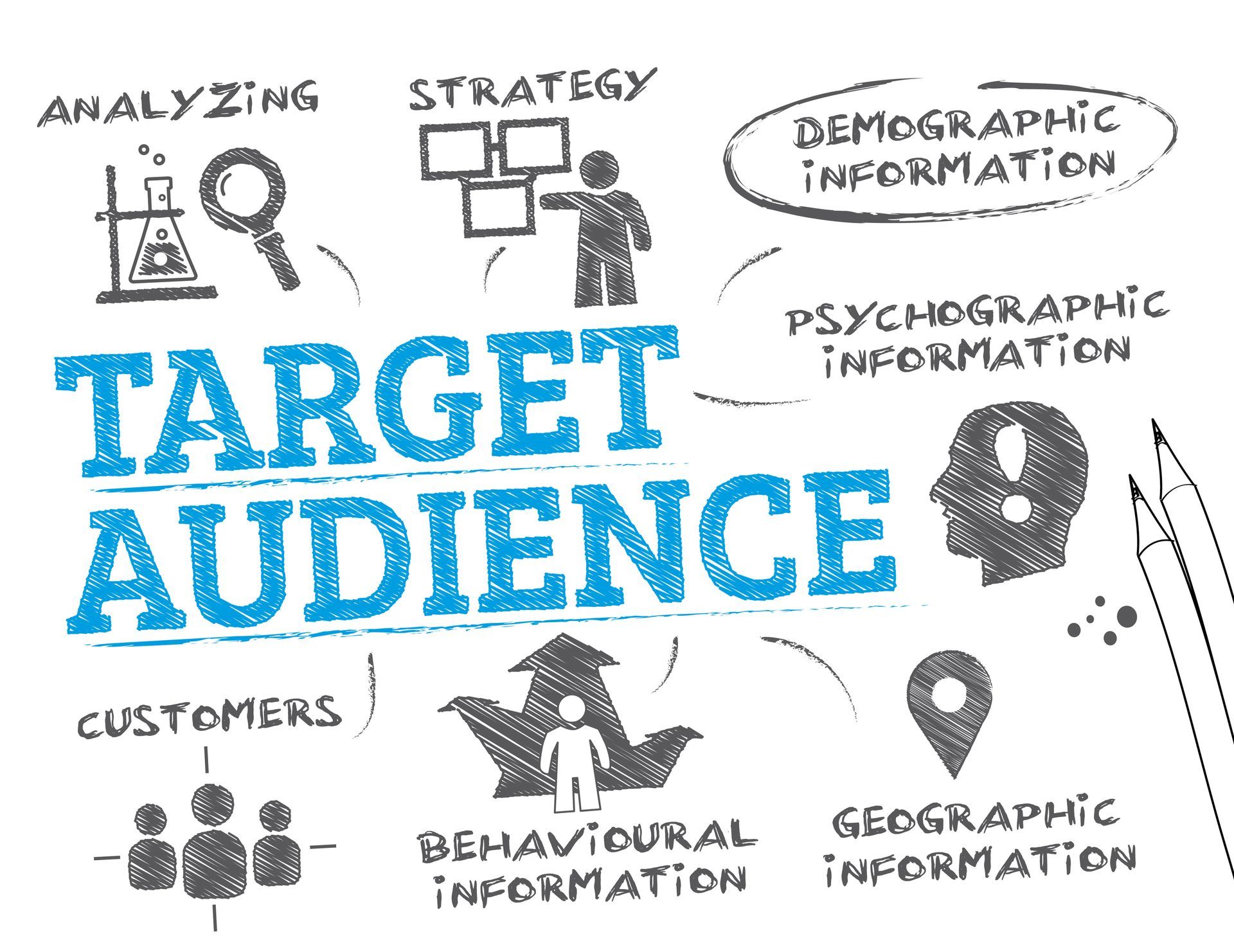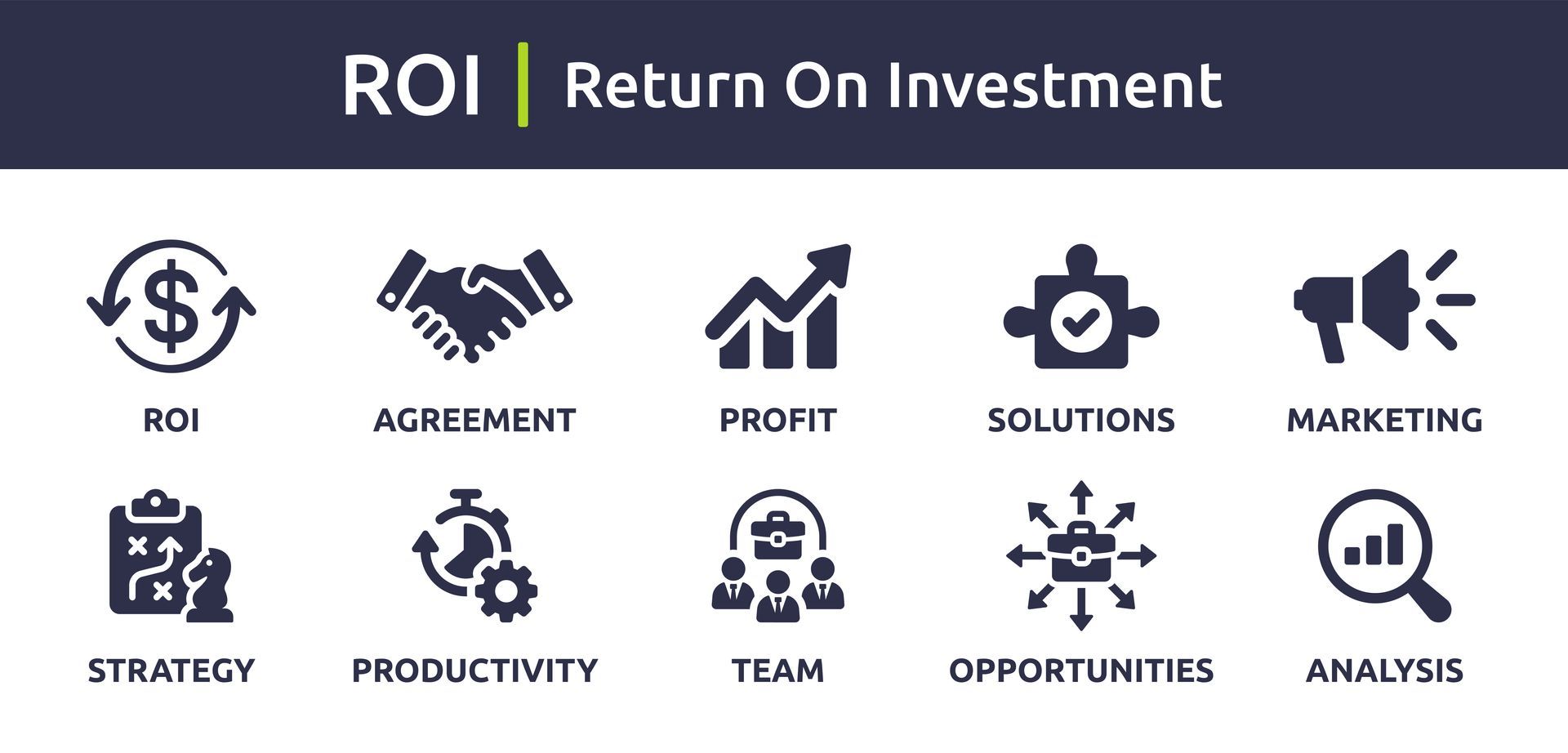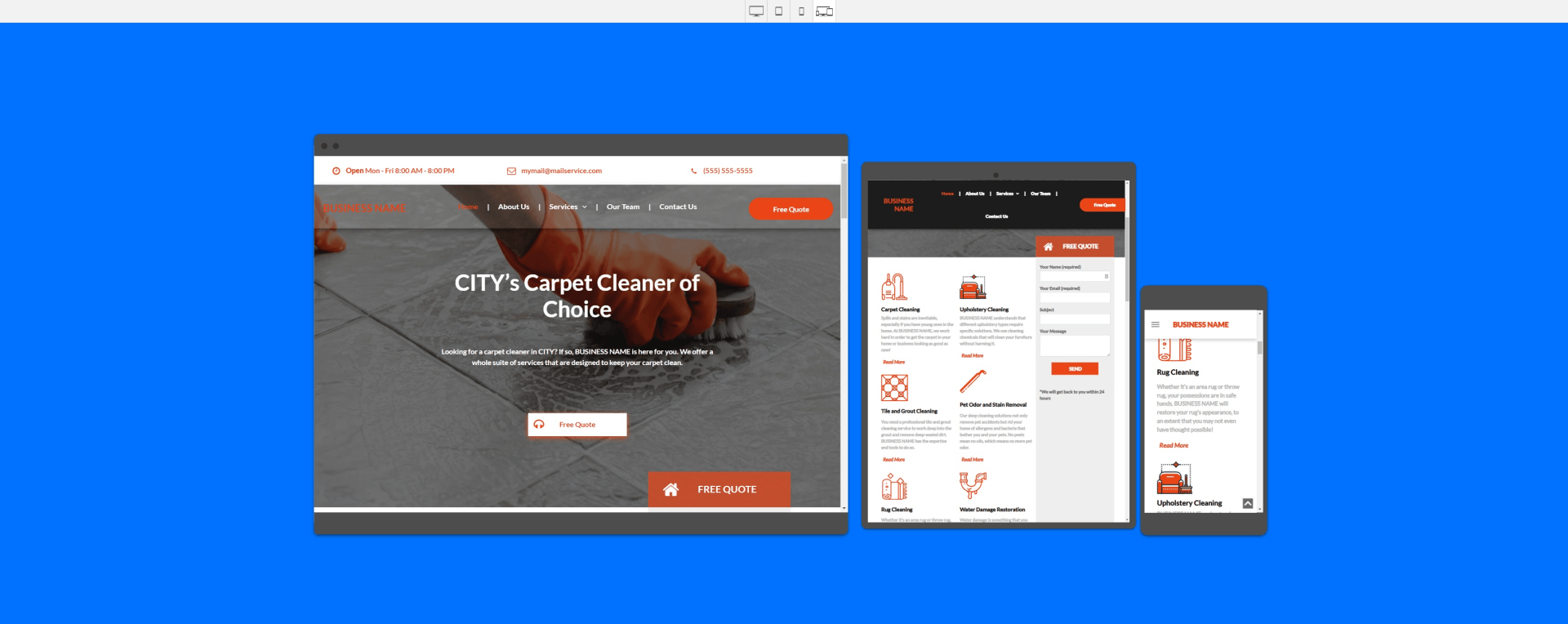
Maximizing ROI: Creating Marketing Goals for Small Business That Work
Are you a small business owner looking for effective marketing that won't break the bank? Look no further! In this comprehensive guide, we'll explore how to set clear marketing objectives, identify your target audience, develop a strong online presence, and make the most of offline marketing tactics. With these strategies in hand, your small business will be poised for success.
Setting clear marketing objectives is crucial for small businesses. From defining marketing goals for small business to understanding your ideal customer and optimizing your website, we'll provide you with the tools you need to make an impact in your industry and build a strong online presence. So let's dive in and discover the secrets to creating a small business marketing strategy that delivers results.
Short Summary
- Set SMART marketing objectives that align with your business goals.
- Identify and understand your target audience to create effective strategies.
- Track success, allocate resources & budget wisely for maximum efficiency.

Establishing Clear Marketing Objectives
Establishing clear marketing objectives is vital for small businesses to gauge their progress and achieve their ambitions. By setting motivating goals and aligning them with your business objectives, you can ensure that your marketing efforts are focused on the right targets.
What are SMART goals?
- Specific: Breaking down your goals
- Measurable: Tracking your progress
- Achievable: Setting realistic targets
- Relevant: Aligning with your values
- Time-bound: Establishing deadlines
In this section, we'll discuss the importance of marketing objectives, the characteristics of effective objectives, and how to align them with your business goals.
Importance of Marketing Objectives
Setting achievable objectives is far more beneficial than setting lofty goals that can't be reached. With a clear objective in mind, small companies can stay focused on customers and become renowned as true experts in their field. By leveraging powerful tools like Google Analytics and social media sites, you can gain valuable insights into your target audience and craft marketing campaigns that truly resonate with them.
However, you should be prepared to take actionable steps based on the results of your marketing experiment, whether they be positive or negative. By tracking and measuring success, you can optimize your website and content for search engines, making it easier for end users to find your company.
Characteristics of Effective Objectives
To ensure your marketing objectives are effective, it is crucial to set SMART goals: Specific, Measurable, Achievable, Relevant, and Time-bound. Aligning objectives with overall business goals is essential to ensure they are achievable and relevant.
By tailoring objectives to your target audience, you can craft marketing strategies that resonate with them and drive success. Remember to monitor and adjust your objectives regularly to ensure that they stay relevant and achievable.
Aligning Objectives with Business Goals
Aligning marketing objectives with business goals is essential for achieving success as it guarantees that your marketing efforts are in line with the overall business goals. This helps to ensure that the marketing efforts are targeted towards the right objectives and that the resources are being utilized in the most efficient way. By considering marketing objectives early in the business planning process and setting them to support your overarching business goals, you can ensure your marketing objectives are aligned with your business goals.
Automation can help maximize efficiency and ensure communication consistency, streamlining processes and minimizing manual work. Furthermore, happy customers are an invaluable asset for marketing. By sharing their positive experiences on social media or review sites, they can help boost brand awareness and trust, ultimately resulting in more sales.

Identifying Your Target Audience
Identifying your target audience is essential for achieving success with your marketing campaigns. Knowing who your ideal customers are will enable you to create marketing strategies that resonate with them and ultimately drive sales.
In this section, we'll discuss market research techniques to gather data, create buyer personas, and monitor and adjust your marketing strategies based on data.
Market Research Techniques
Market research techniques can be employed to gain valuable insights into your target audience. By leveraging powerful tools like Google Analytics and social media sites, you can gather data on your target audience and create marketing campaigns that resonate with them. Keyword research can provide valuable insight into your buyer personas and help you better understand their needs. Tools like KW Finder can help you find the perfect keywords for your target audience.
Gaining insight into your target audience's demographics can be achieved by inquiring existing customers about their age, gender, geographical location, education level, household income, and size. By understanding your target audience, you can develop a strategy that focuses on your ideal customer to ensure success.
Creating Buyer Personas
A buyer persona is a powerful, fictional representation of the ideal customer that can help you better understand your target audience. Creating a buyer persona can help you gain a deeper understanding of your target customer and their needs, enabling you to create more effective marketing strategies.
Gaining insights into your target audience is key. Include information on their interests, demographic details such as age, sex, and location, lifestyle choices such as being healthy or sedentary, and more. Keep in mind that 71% of consumers are more likely to make a purchase when referred by social media.
By understanding your buyer persona and leveraging social media referrals, you can drive more sales and grow your business.
Monitoring and Adjusting
Monitoring and adjusting your marketing strategies based on data is crucial for maximizing the impact of your marketing efforts. By identifying key performance indicators (KPIs) and using analytics tools to track and measure your KPIs, you can gain valuable insights that will help you adjust your strategies and tactics as needed for maximum efficiency.
Continuously refining your marketing strategies based on data will ensure that your efforts are targeted toward the right objectives and that your resources are being utilized effectively.

Developing a Strong Online Presence
Developing a strong online presence is critical for small businesses to reach customers and build brand awareness. In today's digital world, having a website and engaging with customers on social media platforms can significantly impact your business's success.
Website Creation and Optimization
Creating a website can benefit small businesses by providing a platform to showcase their brand identity, products, location, and contact information. Additionally, it is an invaluable asset that can be used to generate organic traffic and is entirely owned by the business. Make sure to use the right keywords to accurately describe your business and the services it offers.
Small businesses can take advantage of the expertise of freelancers or marketing agencies specializing in web design to create an engaging website. Using a CMS template and SEO plugins for website optimization can help ensure that your website is optimized for maximum visibility and search engine rankings. By optimizing your website for on-page SEO, you can strategically place keywords in the meta description, page titles, and H1 tags to boost your website's visibility online.
Social Media Strategy
Social media marketing is an effective way to connect with your target audience, enhance your brand's visibility, and promote your products and services. Having up-to-date social media accounts helps to foster meaningful relationships with potential customers and increase your online presence. Small businesses can maximize their impact on social media by understanding their target audience, discovering where they are spending the most time, creating content that resonates with them, and making sure it reaches them.
Creating a Twitter account, Facebook page, Instagram, and Pinterest page are great ways to reach new audiences. Community managers can respond to questions or concerns of followers and build trust with the audience. Small businesses should be mindful not to overextend by joining too many platforms simultaneously. Having a content plan and publishing schedule for social media can help you stay consistent and make dynamic adjustments as needed.
Joining local business communities to network with other entrepreneurs in your area and gain valuable insights is another great strategy for small businesses to grow their online presence.
Email Marketing and Automation
Email marketing is an essential part of your marketing toolkit and is the most effective way to reach your target audience. Small businesses can take advantage of email marketing by sending out newsletters (with your sleek new blog posts) and other promotions to their database. Experiment and see what works best for you. Be sure to consider frequency, campaign type, email service provider, and building your email list for maximum success when crafting an email marketing plan.
Marketing automation can make the email marketing process even easier for small business owners, allowing them to unlock their potential. Some of the amazing analytics that email tools provide include tracking open and click rates, giving you valuable insights into your customers' behavior. Building an email list can save you time and effort in the long run. Providing prospects with a code for a free trial can be advantageous so they can experience it for themselves.

Exploring Offline Marketing Tactics
While a strong online presence is crucial, it's also essential to explore offline marketing tactics to reach potential customers who may not be as active online. Networking and partnerships, event marketing, and print and promotional materials can all play a significant role in growing your business.
In this section, we'll discuss the advantages of these offline marketing tactics and how they can complement your online efforts.
Networking and Partnerships
Networking and partnerships can help you build valuable relationships with other businesses or individuals that can lead to mutual benefit. Engaging in networking and partnerships can help businesses broaden their reach, gain invaluable insights, and access fresh possibilities.
Some successful partnerships, like Barnes & Noble and Starbucks, have agreed to provide an in-house coffee service within each bookstore, showcasing the power of collaboration between businesses.
Event Marketing
Event marketing is a powerful strategy that marketers use to effectively promote their brand, product, or service through exciting in-person or real-time engagement at events such as conferences, trade shows, and expos. It helps businesses gain new customers and strengthen relationships with existing clients.
The steps for achieving event marketing success involve setting goals, researching and selecting the right event, crafting a marketing plan, executing the plan, and tracking and measuring success.
Using analytical tools to measure progress can help you optimize your event marketing efforts and get the most out of your investment. By identifying areas that need improvement and making changes to the strategies to optimize performance, you can ensure that your event marketing efforts are targeted toward the right objectives and that your resources are being utilized effectively.
Print and Promotional Materials
Print materials like brochures, flyers, business cards, and posters can help spread the word about your business or product. Promotional materials like pens, keychains, and t-shirts can help create an even greater impact as they are tangible reminders that your customers can take away with them. When creating print and promotional materials, it is essential to ensure that they are visually captivating, informative, and in line with your brand.
Some inspiring examples of print and promotional materials include direct mail campaigns using vibrant postcards, eye-catching brochures, or personalized letters. Trade shows, fairs, farmers markets, and other events that draw in customers can also benefit from print and promotional materials. By leveraging these offline marketing tactics, you can expand your reach and attract new customers who may not have discovered your business otherwise.

Tracking and Measuring Success
Tracking and measuring success is important to understand what works and what doesn't in your marketing efforts. Utilizing Key Performance Indicators (KPIs), analytical tools, and adjusting strategies based on data can help you optimize your marketing strategies and maximize your success.
In this section, we'll discuss the importance of tracking and measuring success to make data-driven decisions and improve your marketing efforts.
Key Performance Indicators (KPIs)
Key Performance Indicators (KPIs) are powerful, quantifiable metrics that help us measure progress towards our objectives. They provide inspiring targets for teams to strive for, meaningful milestones to track our progress, and valuable insights that can help everyone in the organization make smarter decisions.
Some examples of KPIs include revenue per region per month or new customers per quarter - these are great metrics to track your progress and success.
Analytics Tools
Analytical tools are powerful software applications that allow you to retrieve and analyze data, enabling you to gain valuable insights and take actionable steps. Examples of analytical tools include Excel, business analytics tools, and data analysis tools.
The advantages of using analytical tools can help you make better decisions, gain a deeper understanding of customer behavior, and become more efficient. The best practices for using analytical tools to maximize results include setting clear goals, understanding the data, and using the right tools for the job to ensure you get the most out of your analytics.
Adjusting Strategies Based on Data
Adjusting marketing strategies based on data can help you get the most out of your marketing efforts. This involves analyzing the data collected, identifying areas that need improvement, and making changes to the strategies to optimize performance. By collecting and analyzing data, finding the right marketing channels, creating personalized ads, developing a content strategy, refining the brand, and using data to make decisions, you can make sure your marketing strategies are getting the best results.
Additionally, using SEO techniques, organizing content, avoiding mistakes, creating new design concepts, and finding new marketing opportunities can further help you reach your goals. Continuously refining your marketing strategies based on data will ensure that your efforts are targeted towards the right objectives and that your resources are being utilized effectively.
Marketing Budget and Resource Allocation
Allocating resources wisely is crucial for the success of your small business's marketing efforts. Determining your marketing budget, allocating resources, and outsourcing or collaborating with other businesses can help you optimize your marketing strategies and make the most of your investment.
In this section, we'll discuss the importance of allocating resources wisely and the steps you can take to make the most of your marketing budget.
Determining Marketing Budget
Figuring out a marketing budget can be done in a number of ways, like the percentage of sales method, competitive parity method, objective and task method, and the Dorfman-Steiner Theorem. For B2B companies, it is recommended to allocate between 2 and 5% of their revenue for marketing, whereas, for B2C companies, the proportion is often higher, between 5 and 10%. Small businesses can make an informed decision on their marketing budget by allocating a portion of their expected gross sales toward their monthly or yearly marketing budget.
Understanding the power of existing customers can help you save money, as leveraging their satisfaction can be five times more cost-effective than acquiring a new customer. Using free promotional tools can be a great way to save money and keep overhead costs low for small businesses.
Allocating Resources Wisely
To ensure you are making the most of your resources, it's essential to prioritize what's most beneficial for your business. This could include marketing activities, product development, customer service, or other areas that can give your business a competitive edge.
By understanding cash flow, outlining current needs, assessing the budget, developing goals, and aligning the budget with goals, you can ensure you are making the most of your resources. Setting key performance indicators (KPIs) and using analytical tools to measure progress are great ways to track your performance.
Outsourcing and Collaboration
Outsourcing and collaboration can be a great way to reduce costs and achieve a common goal. Collaborative outsourcing is a powerful combination of both, allowing you to contract out parts or the entire development process to an outside supplier. This can help to maximize efficiency and optimize your resources.
Small businesses can get connected with other local businesses by collaborating with them to offer discounts, deals, or coupons to customers, running a live stream with local business owners during a promotional event, or organizing a giveaway. Networking with other small businesses is a fantastic way to spread the word and join forces for greater success.
By leveraging the power of existing customers, you can save money, as leveraging their satisfaction can be five times more cost-effective than acquiring a new customer. Using free promotional tools can be a great way to save money and keep overhead costs low for small businesses.

In Conclusion
Developing a well-crafted small business marketing strategy is crucial for success in today's competitive market. By setting clear marketing objectives, identifying your target audience, developing a strong online presence, and exploring offline marketing tactics, you can effectively reach potential customers and grow your business. Additionally, allocating resources wisely, determining your marketing budget, and outsourcing or collaborating with other businesses can optimize your marketing efforts and maximize your return on investment.
With the right tools and strategies in place, your small business can flourish in the ever-evolving world of marketing. So, take the time to carefully plan and execute your marketing strategy, closely monitor your progress, and adjust your tactics as needed. With persistence and determination, your small business can achieve great heights and become a force to be reckoned with in your industry.
Frequently Asked Questions
What are marketing goals for small business?
As a small business, your marketing goal should be focused on generating leads and driving sales. You can achieve this by creating campaigns that engage customers, improve brand recognition, and increase conversions.
With the right objectives and strategies in place, you can see measurable success for your business.
What are some goals for marketing?
Setting effective goals for your marketing strategy is essential for success. With that in mind, some of the main goals of marketing are to increase brand awareness, engage potential customers, generate leads, boost sales, and drive loyalty.
By setting specific goals and objectives, you can track your progress, adjust strategies as needed, and effectively measure ROI.
What are the 5 smart goals in marketing?
Creating SMART marketing objectives is an effective way to reach goals in a timely, meaningful manner. Each objective should be specific, measurable, actionable, relevant, and time-bound to ensure that the desired outcome is achieved.
Specific: Breaking down your goals
Measurable: Tracking your progress
Achievable: Setting realistic targets
Relevant: Aligning with your values
Time-bound: Establishing deadlines
By following this process, you can effectively set 5 smart goals for your marketing strategy.








Unlock the Unlimited Potential of Your Business
Our professionals stop at nothing to provide excellent digital marketing solutions.
Do you want your business to be found all over online? Small Biz SEO can help. We are a marketing company that specializes in SEO for small business growth. Our team of SEO experts can help you get the most out of your website and increase your online visibility.
Our Services
All Rights Reserved | Small Biz SEO





















